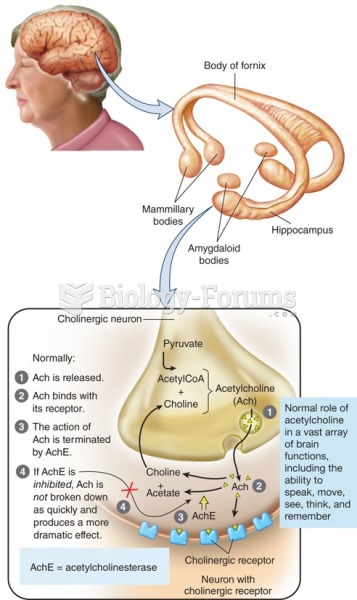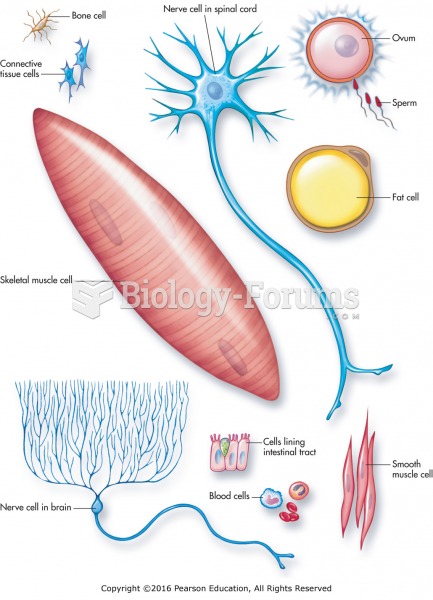Answer to Question 1
Correct Answer: 3
Rationale 1: Potency refers to what dose of drug must be administered to achieve a certain level of response.
Rationale 2: Bioavailability is an index of what fraction of administered drug is absorbed and available to act in the body.
Rationale 3: Half-life is the time it takes the body to remove one-half of the drug from the circulation, and thus is a measure of how long the drug effect will last in the body.
Rationale 4: Efficacy refers to the magnitude of the response to a given dose of drug.
Global Rationale: Half-life is the time it takes the body to remove one-half of the drug from the circulation, and thus is a measure of how long the drug effect will last in the body. Potency refers to what dose of drug must be administered to achieve a certain level of response. Bioavailability is an index of what fraction of administered drug is absorbed and available to act in the body. Efficacy refers to the magnitude of the response to a given dose of drug.
Answer to Question 2
Correct Answer: 4
Rationale 1: Is a name brand drug is incorrect. A prodrug requires metabolism to make it active. In these cases, as the drug is broken down by chemical reactions of metabolism, the products formed by the breakdown produce a more intense response than does the original drug.
Rationale 2: Is not absorbed by the body is incorrect. A prodrug requires metabolism to make it active. In these cases, as the drug is broken down by chemical reactions of metabolism, the products formed by the breakdown produce a more intense response than does the original drug.
Rationale 3: Is the first drug developed in a drug class is incorrect. This would be a prototype drug.
Rationale 4: In these cases, as the drug is broken down by chemical reactions of metabolism, the products formed by the breakdown produce a more intense response than does the original drug.
Global Rationale: A prodrug requires metabolism to make it active. In these cases, as the drug is broken down by chemical reactions of metabolism, the products formed by the breakdown produce a more intense response than does the original drug. A prodrug is not necessarily a brand name drug. A prodrug is absorbed by the body. A prototype drug, not a prodrug, is the first drug developed in a drug class.







